Set out on a culinary journey unlike any other by discovering the art of cooking Nshima, Zambia’s beloved staple food.
As you explore the intricate flavors and cultural significance of this dish, you’ll uncover the secrets to mastering its preparation while gaining a deeper understanding of Zambian traditions.
Whether you’re a novice cook or a seasoned chef, the experience of creating Nshima promises to be a gateway to a world of culinary delights waiting to be explored.
Get ready to tantalize your taste buds and learn about the heart of Zambian gastronomy.
Good To Know
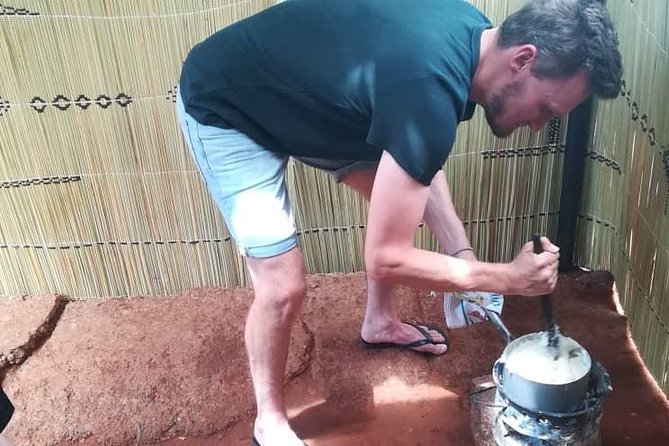
- Experience Zambian cooking traditions with a local
- Prepare nshima, the traditional staple dish
- Engage in a cleansing ceremony for culture
- Enjoy a meal with veggie or meat relish in a local’s home
Zambian Cuisine: Nshima Background
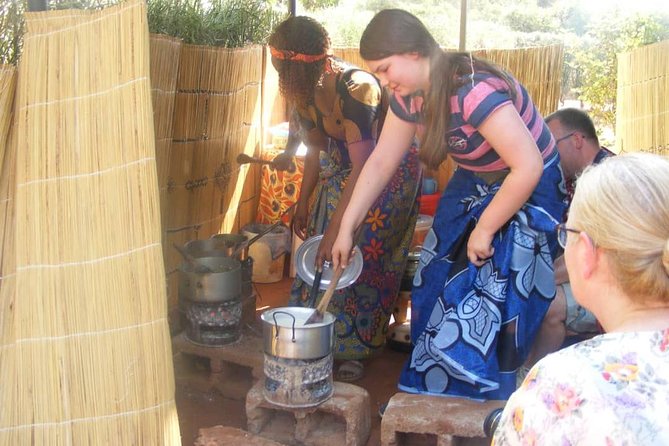
Discover the rich culinary heritage of Zambia by delving into the background of nshima, a beloved staple dish in Zambian cuisine. Nshima holds a significant place in Zambian culture, symbolizing unity and togetherness as it’s often shared from a communal bowl.
The preparation of nshima involves unique cooking techniques, where maize meal is slowly added to boiling water and stirred continuously until it reaches a thick consistency. This process requires skill and patience, reflecting the care and effort put into Zambian traditional cooking.
Understanding the cultural significance and cooking methods of nshima provides a deeper appreciation for Zambian cuisine and the importance of communal dining experiences in Zambian society.
Find more activities and experiences we've covered in Livingstone.
Ingredients and Equipment Needed
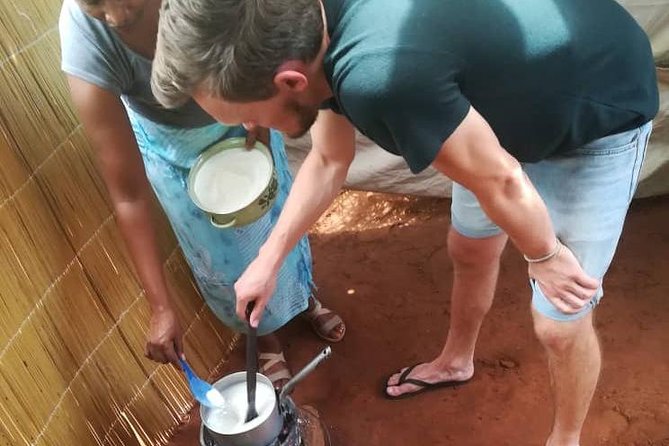
To get started on preparing Nshima, gather the essential ingredients and equipment required for this traditional Zambian dish. Here’s what you’ll need:
- Ingredients:
- Maize meal: The main ingredient for Nshima, providing the dish with its signature texture and taste.
- Water: Used to cook the maize meal into a thick porridge-like consistency.
- Salt: Enhances the flavor of Nshima, balancing the dish’s taste.
When cooking Nshima, it’s important to follow traditional Zambian cooking techniques and seasoning tips to achieve an authentic taste. Understanding the cultural significance and mealtime customs associated with Nshima can also enhance your cooking experience, allowing you to appreciate the dish’s importance in Zambian cuisine.
Step-by-Step Cooking Instructions
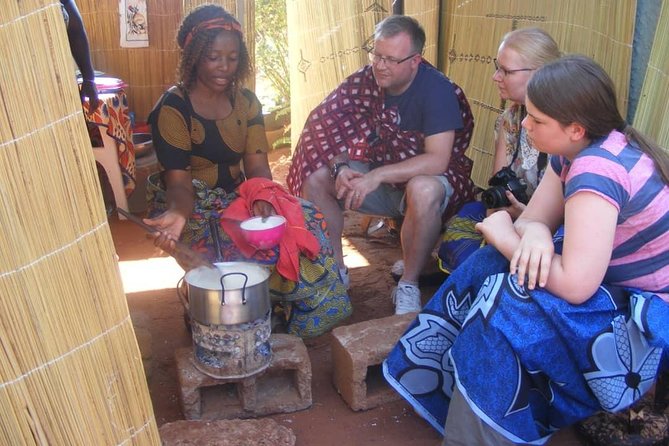
As you gather the maize meal, water, and salt for cooking Nshima, let’s dive into the step-by-step instructions to create this traditional Zambian dish.
Start by boiling water in a large pot over high heat. Gradually add maize meal while stirring continuously to prevent lumps. Reduce the heat and let it simmer for about 15-20 minutes, stirring occasionally. The mixture will thicken to a consistent, smooth texture, resembling mashed potatoes. This process requires patience and attention to achieve the desired smoothness.
Once ready, use a wooden spoon to shape the Nshima into small, round balls. In Zambian culture, Nshima is often enjoyed with various relishes like vegetables or meat. This staple food reflects the communal and shared dining traditions of Zambia.
Tips for Perfecting Your Nshima
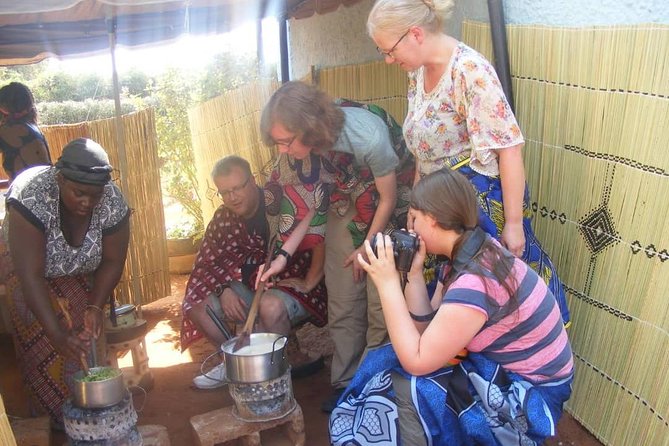
For a perfect bowl of Nshima, ensure the maize meal is gradually added to boiling water while stirring continuously to achieve a smooth texture.
When perfecting your Nshima, consider the following tips:
Cooking Techniques: Master the art of stirring consistently to prevent lumps from forming in your Nshima.
Cultural Significance: Understand the importance of Nshima in Zambian culture and the communal aspect of sharing this staple food with others.
Taste Testing and Ingredient Substitutions: Taste test your Nshima as you cook to adjust salt levels accordingly, and feel free to experiment with different ingredients like millet or sorghum for unique variations.
Serving and Eating Nshima Traditionally
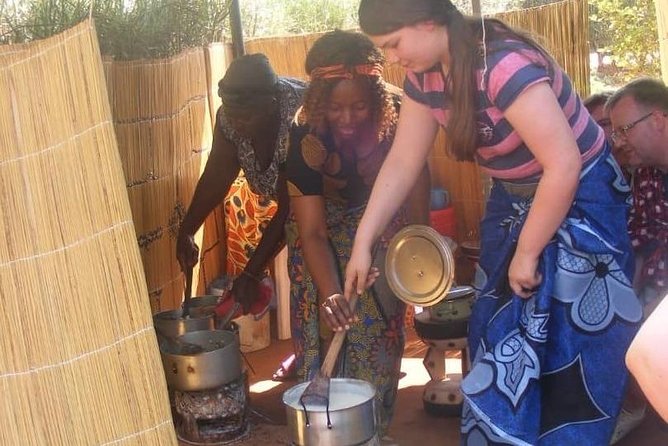
Savoring Nshima in Zambia involves using your hands to scoop up the delicious maize meal, creating a unique and communal dining experience.
Traditional customs dictate that nshima is typically served in a large communal dish, with family and friends sitting together to share the meal.
In Zambia, eating nshima is a social event, symbolizing unity and togetherness within the community.
The cultural significance of nshima goes beyond just being a staple food; it represents bonding, respect, and a connection to tradition.
When enjoying nshima, it’s common to use your right hand for scooping and eating, showing respect for the meal and those sharing it with you.
This practice highlights the importance of community and togetherness in Zambian culture.
Variations and Flavor Combinations
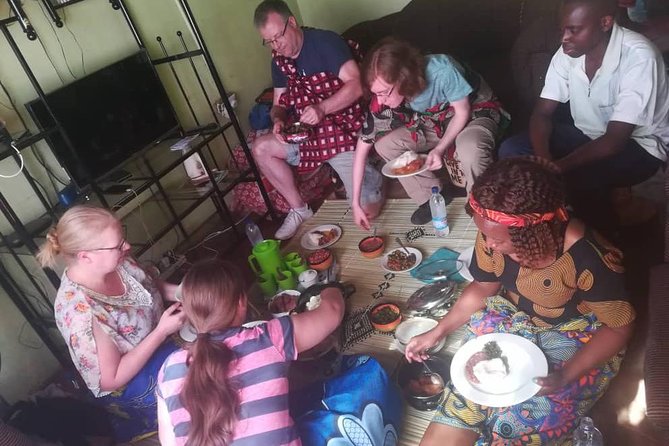
Discovering the diverse variations and exciting flavor combinations of Nshima adds a delightful twist to the traditional Zambian staple food experience.
Nshima can be enhanced with different flavor profiles such as:
- Adding groundnuts for a nutty taste
- Incorporating dried fish or kapenta for a savory kick
- Mixing in vegetables like pumpkin leaves or okra for a fresh and nutritious touch.
These variations not only cater to personal preferences but also hold cultural significance, reflecting the rich culinary heritage of Zambia.
Exploring the different flavor combinations of Nshima allows for a deeper understanding of Zambian traditions and the importance of food in bringing communities together.
Frequently Asked Questions (FAQs)
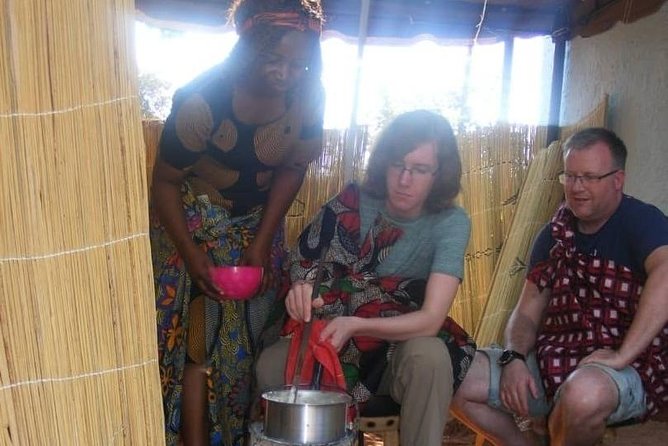
Set out on a culinary journey through the world of Zambian cuisine by exploring the Frequently Asked Questions (FAQs) surrounding the preparation and enjoyment of Nshima, the country’s beloved staple food.
Nshima holds significant cultural importance in Zambia, often symbolizing togetherness and community during shared meals. One common question is about the cooking techniques for Nshima, which involve slowly adding maize meal to boiling water while stirring continuously to achieve the desired thick consistency.
Understanding the cultural significance of Nshima is also essential, as it’s often served during important gatherings and ceremonies, showcasing hospitality and unity. By delving into these FAQs, you’ll gain a deeper appreciation for not just the flavors but also the traditions that make Nshima a cherished dish in Zambia.
Frequently Asked Questions
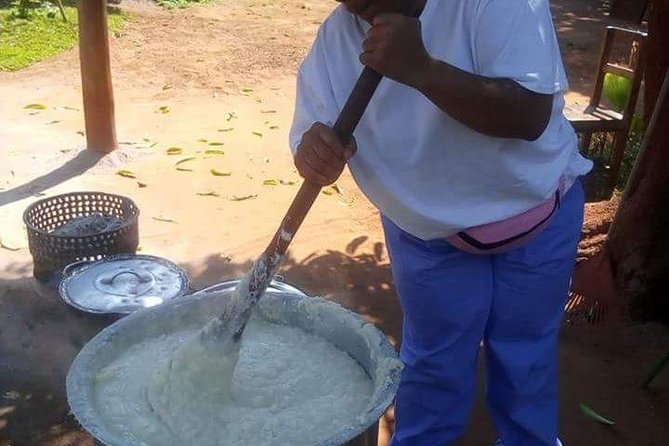
Is the Cooking Class Suitable for Beginners With No Prior Cooking Experience?
For beginners with no prior cooking experience, the class offers a welcoming environment to learn Zambian cooking techniques and explore traditional ingredients. Participants can enjoy the art of preparing nshima, the Zambian staple food.
Can Participants With Dietary Restrictions or Food Allergies Be Accommodated During the Cooking Class?
When accommodating dietary restrictions or food allergies, participants can feel reassured. The class strives to cater to individual needs, ensuring everyone can partake in the cooking experience without worry. Enjoy learning without limitations.
Are There Any Cultural Customs or Etiquette That Participants Should Be Aware of During the Cooking and Dining Experience?
In Zambia, participants should respect cultural customs like washing hands before meals and eating nshima with their right hand. Dining etiquette includes thanking the host, finishing the meal, and avoiding wasting food to show appreciation for Zambian traditions.
Will There Be Opportunities to Interact With Locals and Learn More About Zambian Traditions Beyond Just Cooking Nshima?
Local interactions during the experience offer culture beyond cooking. Participants engage with Zambian traditions as they visit a local’s home, partake in a cleansing ceremony, and enjoy lunch, gaining insights into daily life.
How Long Is the Entire Experience, Including the Cooking Class, Visit to a Local’s Home, and Cleansing Ceremony?
The experience spans approximately 4 hours, blending time management with culture. Participants engage in cooking techniques, learn traditional practices, and partake in a cleansing ceremony. This holistic journey offers insights into Zambian traditions beyond just Nshima.
The Sum Up
Set out on a culinary journey in Livingstone, Zambia, and master the art of cooking Nshima, the country’s beloved staple dish. With hands-on experience, cultural insights, and delicious flavors, this cooking class offers a truly unforgettable experience.
Don’t miss out on the opportunity to savor the essence of Zambian gastronomy and create lasting memories. Book your class today and get ready to learn about the rich traditions and flavors of Zambian cuisine.
More Tour Reviews in Livingstone
- Livingstone: Game Drive and White Rhino Walking Safari
- Livingstone: Game Drive and White Rhino Walking Safari
- Guided Tour Of Victoria Falls-Zambia
- Private Tour to Mukuni Village in Zambia
- Game Drive and White Rhino Walking Safari in Livingstone Zambia
- Overland Safari Livingstone to Lusaka via Lower Zambezi National Park – 7 Days.
Looking for something different? Other Livingstone activities we've written about
- Livingstone: Game Drive and White Rhino Walking Safari
- Livingstone: Game Drive and White Rhino Walking Safari
- 10 Best Historical Tours In Livingstone
- 25 Best Tours In Livingstone
- 2 Best 3 Day Tours In Livingstone
- 2 Best 2 Day Tours In Livingstone
- 6 Best Boat Tours And Cruises In Livingstone
- 11 Best Private Driver Services In Livingstone
- 10 Best Full-Day Tours In Livingstone
- 25 Best Safari Tours In Livingstone
- 2 Best 3 Hour Tours and Experiences in Livingstone
- 6 Best Airport Transfers In Livingstone
